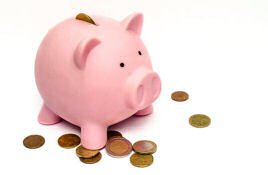The economy of scale in China
We've recently witnessed that Chinese economy has progressed sharply, and let's have a chance to contemplate it concerning the economy of scale.
First of all, as we often mention the notion on the economy of scale when we discuss the competitiveness of industry in the market, it says that the cost of the production decreases to some extent when a corporation increases its output.
It shows the characteristics of a different function which a long-term average cost(LAC) decreases as an output increases, in technical jargon.
An expression on it as follows.
dLAC(Q)/dQ<0
* d: a demand curve function
LAC: a long-term average cost
Q: an output
Although the reason for the economy of scale may be diverse, it occurs when the increasing or decreasing returns to scale exist, in most cases.
Let me take an easy example.
I open a pasta restaurant, and I decide to hire an employee since I can sell my pasta like hot cakes. If the monthly wage of the employee is 1,000 dollars, this additional expense is the marginal cost.
By the way, as I've made an additional profit of 5,000 dollars resulted from the increased turnover ratio of tables in my restaurant when I hire the employee, we call it as the marginal profit.
What we should consider at this point is that I've earned 6,000 dollars additionally by adding only 1,000 dollar's personnel wage to the current expenditures without a hefty additional cost, because I hire an employee with already equipped kitchen facilities and interiors.
We can tell what we read above as an expression of economics as follows.
When we call the total cost as C(Q), a long-term average price is LAC(Q)=C(Q), a long-term marginal cost(LMC)(Q)=dc(Q)
At this moment, the economy of scale shows dLAC(Q)/d(Q)>0, as mentioned above, and more complicated expression appears in some arranged forms as follows.
dLAC(Q)/dQ=[c(Q)/Q]/dQ=1/Q*dC(Q)/dQ-1Q2*C(Q)=1/Q[dC(Q)/dQ-C(Q)/Q]= 1/Q[LMC-LAC]<0

A long-term average cost curve and a long-term marginal cost curve draw downward to the right when we express it as a graph, and it means that both the production costs and the cost of maintenance(equipment maintenance, expenses on hiring, etc.) fall to some point, if output rises.
The problem is how long this positive effect can keep its momentum.
Coming back to my pasta restaurant, the smooth flying of my business has excited me, and I've made up my mind to expand my restaurant by taking over a donut store next door.
However, it doesn't make the cost decreased(diminishing) but makes it risen(increasing) after all. We can call it the law of the increasing marginal cost.
Here we can ask the appropriate point where we should increase our investment. Conclusionally, the point where the marginal cost and the marginal profit equal is the one that the sales of my restaurant hit the ceiling.
For example, the marginal profit of 6,000 dollars occurs when I hired an employee at first. In the next, the gain is 3,000 dollars when employing another one in the same condition as the former one who can make 1,000 dollars a month by working in the first pasta restaurant, whereas the marginal profit is zero when I need one more clerk by the same wage after expanding my restaurant. Finally, the point where I hire three employees is the place which the sales of my restaurant are at its peak.
If I pick a new one for my restaurant at this point, the increase of marginal cost will lead my business to specific courses to the loss of my profits.
Well, what if what we discuss until now will be applied to the Chinese economy that its population is over 1.3 billion? Without a doubt, the Chinese economy is likely to enjoy an explosive growth at some point. Moreover, the economics of scale will knock China noticeably into shape, especially after its national infrastructure and primary industries run their course to some extent.
Of course, we don't know how long the glorious times of China will be. Because the most of the current industrial structures in China depends upon the industries which produce goods of low price flexibility like agricultural products and crude oils, except some of IT and large corporations related to construction, let alone the potential power of nations that have their oil wells in their territory.
Here we have to acquaint ourselves with the concept of the price flexibility. There are two kinds of the price flexibility. One is about demand; the other is about supply. The principle of calculating these two factors is same. First of all, let's look for the value of the price elasticity of demand.
I lowered the price of a dishful of pasta from 6 dollars to 5 dollars to sell them more. Then the sales volume increased from 1000 dished to 1500 dishes. Now let's calculate the value for the price elasticity of demand.
The value for the price elasticity of demand=(an amount of change in demand/an amount of existing demand)/(an amount of change in price/current price)=[500 dishes(an amount of change in demand)/1000 dishes(an amount of existing demand)]/[1dollar(an amount of change in price)/6dollars(current price)]=(1/2)an amount of change in demand/(1/6)an amount of change in price=(1/2)/(1/6)=3.01
That is, an amount of demand increased about three times in the upper case. It is flexible if the range of the price change is more significant than that of the demanding change, and it is inflexible if the scale of the price is smaller than that of the demand change.
Next, let's see the flexibility of the price. The principle of it is the same as that of the demand. Therefore, we have only to change the demand to supply in the formula.
I decided to buy more tomatoes needed for pasta sauces to meet the demand of increased sales. I could buy them at 20 dollars per 10kg, but the wholesale merchant with whom I'd dealt noticed my business has been flourishing and raised the price of them at 25 dollars a 10kg. Although I curled my lips at him, I couldn't help ordering 15kg of them at that price. Now, it's time to calculate the value for the price elasticity of supply.
The value for the price elasticity of supply=(an amount of change in supply/an amount of existing supply)/(an amount of change in price/current price)=[5kg(an amount of change in supply)/10kg(an amount of existing supply)]/[5dollar(an amount of change in price)/20dollars(current price)]=(1/2)an amount of change in supply/(1/4)an amount of change in price=(1/2)/(1/4)=2.0

That is, the price elasticity of supply of tomatoes is 2.0, and when the price of them rises by 1, an amount of supply for them increases by 2.
Let's get back to the Chinese economy.
What we can understand from the above examples is that goods of the price flexibility at higher rates are the ones of the high added value like cars, computers. Mobile phones, whereas items of the lower price elasticity are the raw materials like lumber, agricultural products, petroleum.
By the way, does China have to produce the raw materials or the lower added value items forever? No, it doesn't. China can't help but convert its economy to the higher added value industry, and they must establish and expand the investment for the new or updated facilities in addition to existing infra.
Of course, the more significant is the scale of economy, the more it requires the cost for the renewal at the astronomical level. In other words, the increase of the marginal cost above which I mentioned gets to soar drastically.
Eventually, the flexibility of price goes down in goods having relatively higher added value at that moment. Moreover, if the elasticity gets smaller than 1, GDP is getting diminished, and this phenomenon would be beyond our imagination. If the peak of a mountain is high, its valley is also profound.
Besides, the economy of China is so-called the market economy, but the government controls it in fact. Therefore, their economy is not only an incomplete competitive market but the monopoly is rampant in this situation which the subject for the price is not a taker but a maker who is the government. Because the fundamental of the economy is weak in this economic structure, it may be vulnerable to the minor impact from outside like foreign exchange fluctuations or the change of oil price which are not excruciating.
According to it, the time frame that China can enjoy the expand in quantities comfortably may be at most nothing more than ten tears from now, under the circumstances which their economic policies are successful, the irrationality and inconsistencies in their society don't result in catastrophe, and the crisis from outside will not raid on them. Or they will not be able to reach the level where I mentioned above. One thing they should realize is that now is the very spring season for them in the economic point of view and they must prepare for the better future from now on.
You can read a clone article of it here

we most fallow the economy of chine and your article is very clear about it. i learned a lof and i will be update about it. economy is esential all over the world.
Thank you for your reply!
Yeah, the economy is a key to survival, especially in the modern world.